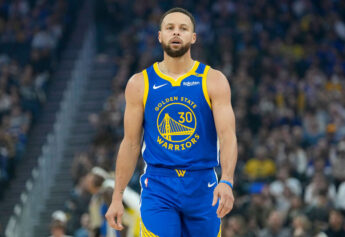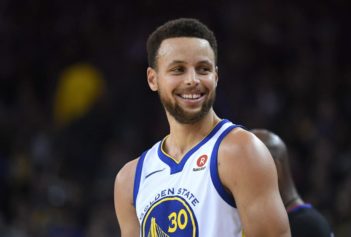When you think of hockey, you seldom think about black athletes.
Increasingly, though, black skaters have become serious players in the professional ranks. In fact, according to Bill Douglas, who writes the blog The Color of Hockey, 2013 “may go down in history in terms of the number of players of color among the 211 players drafted.”
At least eight players of color were chosen during the day-long, seven-round National Hockey League (NHL) draft held two weekends ago at the Prudential Center in Newark, N.J.
The NHL had 69 minority players last season, including 44 players who were on team rosters at the beginning of the season. Of that group, 22 were black, 11 were native/aboriginal, four Latino, three Asian; two were West Asian/Arab, one Inuit and one South Asian/Indian, Douglas reported.
Seth Jones, the son of former NBA star Popeye Jones, was selected fourth overall in the draft, the highest ever for an African-American.
The NHL launched a diversity effort in 1995 and the league feels it has begun paying dividends.
NHL Diversity was designed to provide support and programs to non-profit youth hockey organizations around North America that introduce hockey to children in economically disadvantaged communities. The league said it has exposed more than 40,000 youth to various hockey experiences.
The league’s Director of Youth Development is Willie O’Ree, the former Boston Bruin, who became the first black man to play in the NHL and who is often referred to as the Jackie Robinson of hockey.
Douglas, an avid fan, is fluent in hockey-speak. He got hooked on the game by accident, channel surfing one day while home sick in bed. He had never seen hockey before, “but it looked exciting because of the speed, hitting and skating.”
He read up on the game, saved his allowance, bought skates and gear, taught himself to skate and found pickup games while learning through trial and error.
“I got good enough to play organized youth hockey where I was finally able to get coaching and instruction….As a teenager, I progressed to the Mid-Atlantic Junior Hockey League, a Junior B-level league that covered Pennsylvania, New Jersey, New York, and Delaware. I was one of three black players in the league.”
At 55, Douglas still plays goalie, often at Fort Dupont Park ice rink in Southeast Washington, D.C. He has participated in hockey fantasy camps and planned vacations around opportunities to catch games all over the world. A nephew, a rising college junior, plays left wing on a club hockey team at the University of Notre Dame.
Douglas also has written stories for the official program guides for the 2012 Bridgestone NHL Winter Classic and the 2012 Stanley Cup Final.
“We’re seeing more blacks and other people of color gravitating to hockey because hockey is gravitating to them,” Douglas said. “The game is more visible because it’s on television more—both on cable and local TV. With minority populations growing in the suburbs, kids of color are getting exposed to and involved in the game at suburban ice rinks. And less wealthy urban kids are getting chances to play the game through minority-oriented youth hockey programs across the country. These programs eliminate the main obstacle that previously shut a lot of kids of color out of the game: costs.
“These programs, more than 30 of them sanctioned by the NHL, provide free equipment, coaching, and ice time to participants. Kids today like fast sports with lots of action. Hockey is a natural magnet, no matter what race, ethnicity, religion or gender the kid might be.”
Next time you run across an NHL game while channel surfing, stop and watch a while. The puck won’t be all that’s black on the ice.
Jackie Jones, a journalist and journalism educator, is director of the career transformation firm Jones Coaching LLC and author of “Taking Care of the Business of You: 7 Days to Getting Your Career on Track.”


